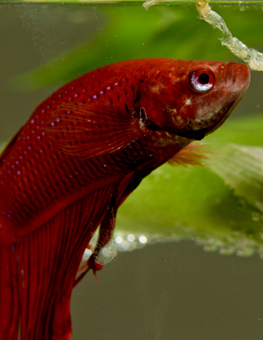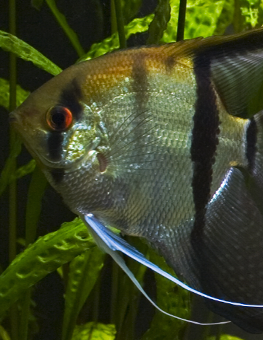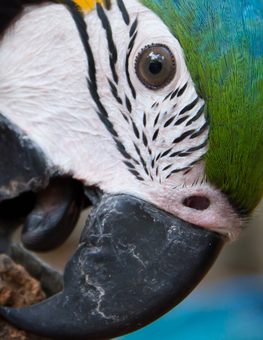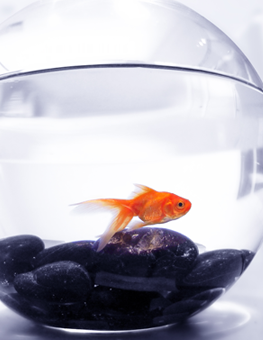Keeping a Healthy Aquarium
When maintained properly, your aquarium is a small model of nature in balance.
Think of your aquarium as one living, breathing organism. If one part of the whole does not work or is thrown off, the other parts suffer, or over-compensate. There are a number of factors to consider when trying keeping a balanced aquarium.
Choosing the right number of fish for your tank
The first time you visit the pet store, it is very tempting to overstock your aquarium with an array of beautiful fish. There are so many to choose, it's difficult to select just a few. Your tank must have a sufficient amount of clean, oxygen-rich, and temperate water (neither too hot, nor too cold) for each fish. Too many fish in your tank will make it impossible to achieve that balance.
Filtering your aquarium
A filtration system is necessary for maintaining clean and healthy water – fish give off more waste than any plants or other fish can use up. Keep the following in mind:
- If your filter is too small or faulty, the aquarium will quickly become dirty and chemicals can build up to toxic levels.
- Care must be also taken when establishing a new aquarium. It will take time for the filter to function properly. Adding too many fish will overwhelm the new filtration system. Initially this can be corrected by adding frequent, large-volume, water changes, but this will not change the result of having too many fish in your tank.
Monitoring tank temperature
Each fish type survives best at a particular water temperature. Tropical fish, for example, prefer a water temperature of about 75oF. In the natural world, water temperatures fluctuate — and tropical fish are able to tolerate it. The key is to prevent aquarium water temperature from becoming constantly too high or too low and to avoid rapid, dramatic changes in water temperature. To better avoid any potential problems, observe the following:
- Your retailer will recommend a reliable and easy-to-use aquarium heater, and also provide you with a thermometer for quick and accurate temperature readings.
- Observe your fish: if they seem to be hyperactive, darting about and a bit frenetic (and it is not during feeding time), the water temperature may be uncomfortably high.
- If your fish appear sluggish, seem to be "shivering" or are disinterested in food, it may be too cool in the aquarium.
Fish feeding basics
Most manufactured foods are formulated to provide fish with all of their nutritive requirements. In terms of feeding frequency, it is better to provide fish with small, frequent meals rather than conducting one enormous feeding session. Small, frequent feedings mimic what fish are accustomed to in nature, and they are also easier on an aquarium's filtration system.The needs of your fish can be met by using a properly sized tank, adequate filtration and maintaining a reasonably steady temperature within your fish’s comfort zone.











